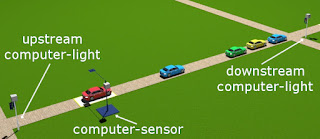New draft: Trajectory stability in the traveling salesman problem
Two generalizations of the traveling salesman problem in which sites change their position in time are presented. The way the rank of different trajectory lengths changes in time is studied using the rank diversity. We analyze the statistical properties of rank distributions and rank dynamics and give evidence that the shortest and longest trajectories are more predictable and robust to change, that is, more stable. Trajectory stability in the traveling salesman problem Sergio Sánchez, Germinal Cocho, Jorge Flores, Carlos Gershenson, Gerardo Iñiguez, Carlos Pineda https://arxiv.org/abs/1708.06945
